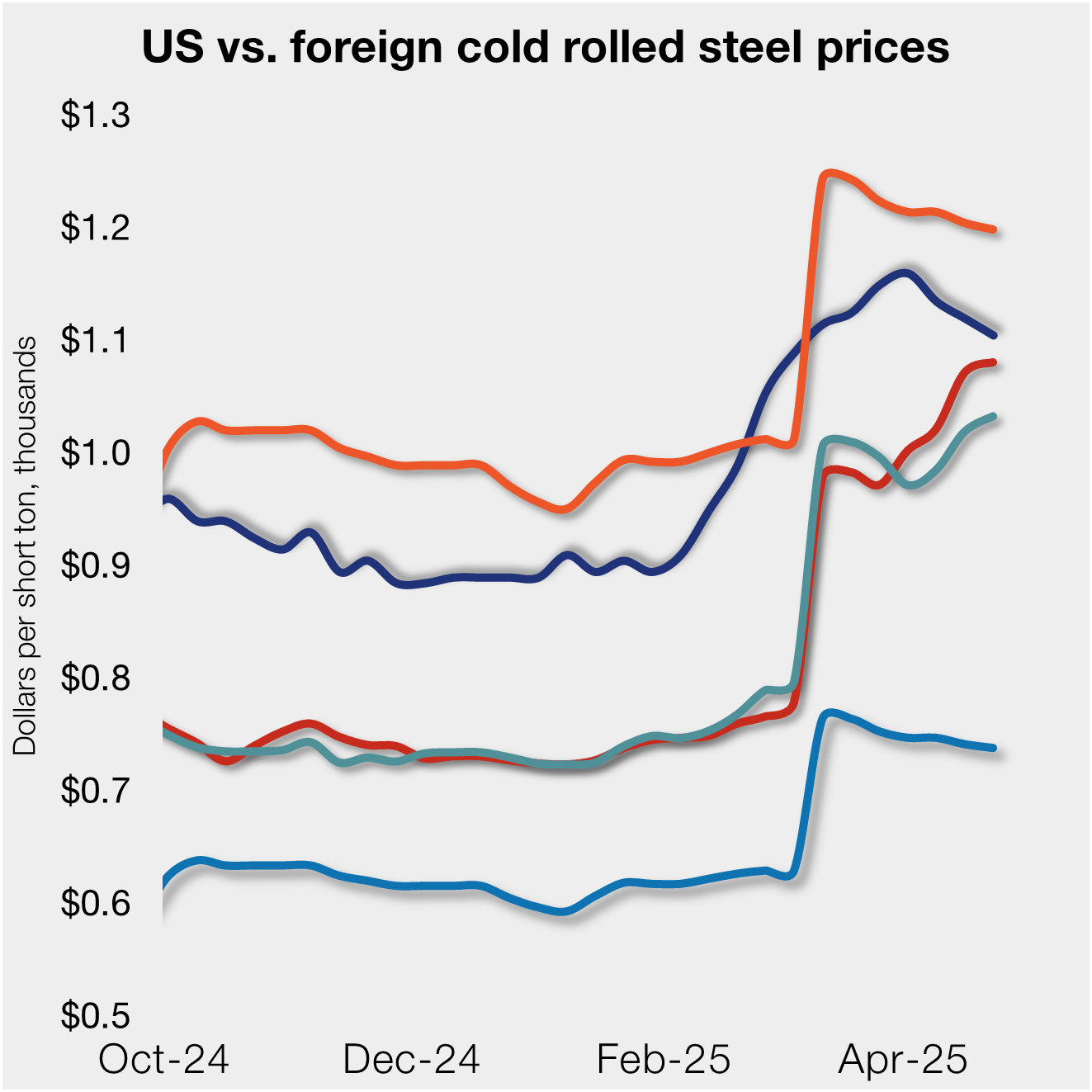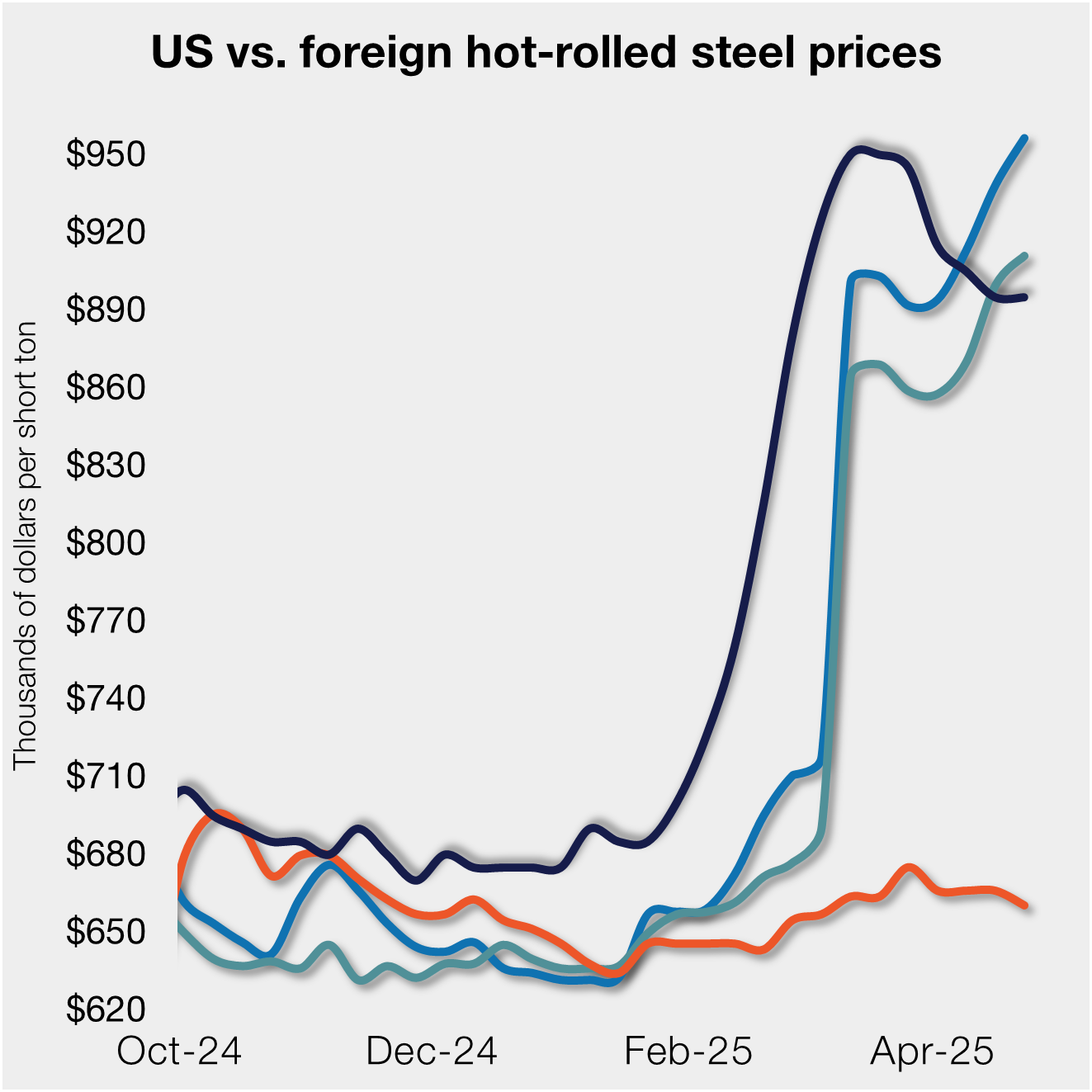Steel Products

Steel Market Chatter This Week
Written by Brett Linton
August 10, 2022
Eariler this week, SMU polled steel buyers on a variety of subjects including current and future steel prices, price increase announcements, supply, demand, and new mill capacity. Rather than summarizing the comments we received, we are sharing them in each buyer’s own words.
We want to hear your thoughts, too! Contact Brett@SteelMarketUpdate.com to be included in our questionnaires.
Nucor announced a $50/ton increase on sheet products Monday. Do you think this increase will have an effect on prices, and how?
“Hopefully it will stop the bleeding and create a floor.”
“Nope.”
“I don’t think it will have a major impact. Nucor may hold strong but other mills may not.”
“I have felt for awhile the mills have been at a floor. I think other mills will follow. It should put a floor on pricing. That said, could be a dead cat bounce.”
“Yes, with the amount of outages coming up and the lack of imports arriving the balance of the year, I believe we have found the floor and should get some bounce back.”
“May stop the slide a week or so.”
“It may start to create a bottom.”
“Yes. I believe tomorrow’s [Tuesday] update will be the low point.”
“Sounds like an attempt to shore up pricing.”
“Yes – establish a bottom/stabilize.”
“The hope is that it’ll continue to ease the declines and maybe even draw the much ballyhooed line in the sand…”
“The mills need to draw a line in the sand and stand on it, every time there is an increase, they always make a secret deal.”
Where do you think steel prices will bottom, and when? Why do you think that?
“HRC will bottom out around $720. On floor inventory has now leveled off. Buyers will get back to business.”
“Now. Just a feeling.”
“Steel prices are close to bottom now. Within Aug./Sept. they could bottom out. Just mills saying more order activity is justifying price inreases. Raw matieral costs will continue to soften but if mills start to collect more orders, demand for raw materials could increse as well, espeically for scrap.”
“If the mills can discipline themselves, today can be the turning point. With prices literally dropping $40/ton a week, why buy steel this week even if I need it? I would rather tell the customer the mills are running two weeks late and grab a better price.”
“Plate has a ways to go. I think we are close to the bottom on HR coil.”
“Looking at actual spot offers (not index values), I would believe we bottom out north of $775 if haven’t already.”
“I think we’re getting there. I wouldn’t be surprised if we see an index dip below $800/ton, but it should go much further. Maybe late August?”
“Q4 around $700.”
“Already did. The big buyers I am sure are buying well below $800 but the small orders will be back north of that number quickly.”
“The bottom will be in August and September.”
“Spot market $70/cwt, offshore $60/cwt, domestic $75/cwt. Cost increases on the bottom line have raised the bar for mills and lines have to be drawn.”
“Q4. I think once contracts are negotiated for 2023 on a futures basis, pricing will then begin to stabilize.”
“4th quarter, lack of demand and increased domestic capacity.”
“Probably around $35.00/cwt – that’s the break even point for the mills.”
Is demand improving, declining or stable, and why?
“Stable to slightly improving. We could definitely ship more product if we had the manpower to support it.”
“Declining. High prices eventually push down demand.”
“Stable – there is still plenty of quoting and construction markets are out at least a year with jobs.”
“Declining, everyone is waiting to see how LOW they can go!”
“Stable.”
“Demand is in a tailspin.”
“Stable to slowing in certain sectors. Others are booked out to early 2023.”
“Slightly down, but we are seeing a lot of outside influence in our primary markets. Either our competitors are spooked, or demand erosion is greater in their primary markets. Wait and see.”
“Demand is only being influenced by buyers playing games with pricing, it is no better or worse than it was.”
“Stable to declining.”
“Declining-to-stable, which I hate to say. A combination of macro concerns and normal “Summer Doldrums” I’m afraid.”
“Leveling off.”
“Demand is soft and orders are declining. Worry of recession is causing reduction of buying.”
“Declining – due to inventory rebalance and lower demand.”
“Improving, service center inventories are low and they have to restock. People aren’t loading up, but they have to buy.”
“Declining, things slowing down and customer buying off contracts due to lower spot prices.”
Are supply chain issues getting better or worse, and why?
“Mixed but overall slighly better.”
“They are not getting any better but are not improving either… No new strategies to improve bottlenecks at ports or trucking.”
“Better – material is readily available. I’m getting an increasing number of excess lists each day, so if it trickles down to my level it warrants quite a bit of excess in the market.”
“Obviously, steel is no longer a concern, remaining categories are stable, but not improved from earlier in the year. It wouldn’t take much to tip the balance again.”
“Staying bad. Ports are terrible and rail is very tough now. Trucking is okay but costs keep increasing.”
“WORSE – numerous reasons.”
“Overall better.”
“Some better, some worse. Because of chips, electronic drives and components are having a severe impact on repairs and new equipment.”
“Some improvement, but not across all industries. West coast port congestion is not improving.”
“Better due to lower demand but still some issues that end customers are experiencing.”
“They remain bleak – they aren’t getting worse and they aren’t getting better.”
“Steel is very easy to get. Customers report continued problems with various components.”
“No supply chain issues at present.”
“Steel supply is better, other products required to run the business is a mixed bag.”
Are you seeing the impact of new North American capacity in the market? If yes, how so?
“We continue to see the new mills/capacity, especially in the southwest acting very aggressive and chasing tons at low numbers.”
“It is going to hold pricing down. Someone will need the order.”
“New capacity has not yet been realized in any major way.”
“It’s not currently front and center but it’s on the horizon.”
“Not at all in the midwest.”
“Additional volumes are starting to hit the market with additional new tons being introduced into the market this fall.”
“In the south we are, up north we are not.”
“There’s plenty of capacity. Lots of spot tons in secondary market too.”
“We see it in the continued decline in steel prices.”
“Not sure if its new capacity in the market, or reduced demand (most likely the later).”
“We all know for now, too much capacity and not enough business.”
“No, they are limiting their production right now.”
“No changes at this time.”
PSA: If you have not looked at our latest SMU Market Survey results, they are available here on our website to all Premium members. We often refer to this as our ‘Steel Market Trends Report,’ and we publish updates every other Friday. We encourage readers to explore the full results, as we simply cannot write about all of the information within. After logging in at SteelMarketUpdate.com, visit the Analysis tab and look under the “Survey Results” section for “Latest Survey Results.” Historical survey results are also available in the Survey Results section under “Survey Results History.” We will conduct our next market survey next week, contact us if you would like to have your company represented.
By Brett Linton, Brett@SteelMarketUpdate.com

Brett Linton
Read more from Brett LintonLatest in Steel Products

US rig count up, Canada declines
Oil and gas drilling activity was mixed this week, according to Baker Hughes. US rig counts expanded for a second straight week, while Canadian activity continued its seasonal slowdown of eight consecutive weeks.

US, offshore CRC prices continue to diverge
US cold-rolled (CR) coil prices declined again this week, slipping for a third straight week. Most offshore markets did the opposite, moving higher this week.

S232 lifts EU HR price over US, Asian HR still well behind
Domestic hot-rolled coil prices were flat this week after dropping for four straight weeks. Most offshore markets bucked the trend and gained ground.

SMU Steel Demand Index dips into contraction
SMU’s Steel Demand Index has moved into contraction, according to late April indicators. The slowdown comes in response to growing tariff uncertainty after the index reached a four-year high in late February.

Nucor selects Fives Group for new galv line at CSI
Nucor Corp. has tapped Fives Group as its partner in designing and manufacturing the new continuous galvanizing line being added at its California Steel Industries (CSI) joint venture in Fontana, Calif.
